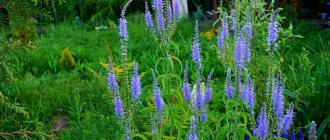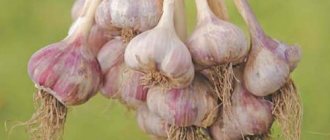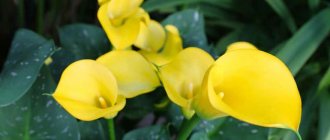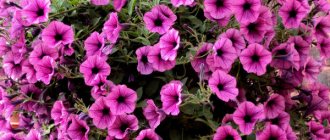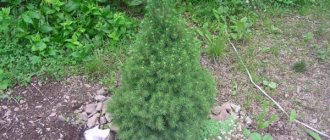The ground cover plant Veronica has from 300 to 500 species. It is distributed throughout the world, including the Arctic. The Veronica genus includes Red Book, medicinal, ornamental and weed plants. Let's try to figure out whether it is a flower or a weed.
It often happens when a plant taken from nature for use in landscape design becomes an “aggressor”. This happened, for example, with Canadian goldenrod, brought to English gardens from North America. The same can be said about some types of speedwell. This primarily applies to veronica filamentosa, ivy-leaved, field, modest and Persian.
Veronica flower: description of the plant, characteristics of the main varieties
Veronica is a herbaceous rhizomatous perennial.
The plant is represented by a wide variety of varieties and varieties, each of which differs in height, external characteristics, including the color and shape of leaves, flowers and even rhizomes (roots can be thin and long, or quite powerful and short, there are even thread-like ones). The plant is popularly known by other names, including “forget-me-not”, “snake grass”, etc. The stems of the plant are straight, or in some cases creeping in height from several centimeters to 1.5 m. The shape of the leaves is varied, the color is in most cases green, sometimes an unusual light gray.
The openwork flowers of the plant are presented in a rich range of shades: blue (natural color), white, pink, etc. They are collected in small spike-shaped or paniculate inflorescences. The duration of the flowering period of Veronica depends on the characteristics of a particular variety.
Advice. If you want to achieve the longest possible flowering period for Veronica in your garden, you need to optimally combine the cultivation of several varieties that differ in flowering periods.
The species diversity of the plant makes it possible to choose the best option both for home conditions and for growing in open ground. The following varieties can be particularly distinguished:
- Medicinal. A perennial ground plant with small soft green leaves and neat decorative flowers in lilac, pink and blue shades.
Medicinal Veronica
- Longleaf. A powerful tall plant (one of the tallest in the Veronica genus). The inflorescences of the plant are quite long, with a spectacular light purple color. It has a long flowering period: throughout the summer until the beginning of autumn. It is incredibly popular among gardeners not only due to its decorative but also medicinal properties; in particular, the variety is an excellent antiseptic.
Longleaf speedwell
- Caucasian. The leaves of the plant are dissected and colored bright green. The flowers have an unusual purple color and thin purple stripes.
Caucasian speedwell
- Gentian. A low-growing plant with thin stems bearing delicate white flowers, the petals of which are covered with small blue stripes.
Gentian speedwell
- Woody. It is a small creeping plant with greenish-gray leaves and pink flowers.
Woody speedwell
- Crimean. A dwarf variety (reaches only 20 cm in height) with small light green leaves and blue flowers.
Crimean speedwell
- Gray-haired. An unusual low-growing variety with bluish leaves and bright blue inflorescences.
Gray Veronica
Description of the species and place of growth
In forest clearings, along river banks throughout Europe, as well as in Siberia and the Far East, this plant is found - long-leaved speedwell. On an erect stem, sometimes reaching a height of one and a half meters, pointed lanceolate leaves, often with jagged edges, are located on short petioles.
The top of the stem and branches are crowned with long inflorescences of blue, dark blue or lilac tones, which are loose clusters, fluffy at the bottom and narrowed at the top. The root of this perennial is long, creeping.
Veronica blooms from mid-summer to autumn.
In October, strong, slightly swollen capsules appear on the stems, consisting of two nests in which small oval seeds are hidden. Veronica's favorite place to grow is in wetlands, in the forest among bushes or steppe meadows, and especially prefers the banks of streams and canals. The shape of the Veronica flower is similar to the inflorescences of the plantain, so it is classified as a member of the family of this medicinal plant.
Plant propagation
The process of propagation of speedwell is carried out in 3 ways: seeds, cuttings or dividing the bush. The seed method is considered quite troublesome, but this is the best option for those who want to get a healthy bush with full-fledged characteristics of the variety. Seeds can either be sown directly into the ground in the fall, or pre-prepared seedlings can be planted in the spring.
If you plan to sow seedlings, you should start preparing planting material ahead of time. At the end of winter, the seeds must be wrapped in damp gauze and placed in the refrigerator for 25-30 days.
Add nutrient soil to the container, then place the seeds not very deep in the ground. It is advisable to place them one at a time in a separate pot or at a distance of about 5-7 cm from each other in a large container. The seeds should be sprinkled with a thin layer of soil and moistened.
Be sure to cover all containers with transparent film and place them in a warm place. When the sprouts have sprung sufficiently (about 8 cm in height), they can be planted in open ground. Do not forget to harden the seedlings some time before, periodically exposing them to fresh air.
Adult plants are easily propagated by dividing the bush
Dividing a bush is a simple way to help achieve flower stalks in the first year after planting. It is important to choose the right sprouts. The bush should be the tallest and absolutely healthy. Separate several sprouts and plant them in the ground. Be sure to cover them with special material. After 10-12 days, remove it and continue growing the plant as usual.
Propagation by cuttings will allow you to successfully grow speedwell from a small shoot about 10 cm long. You should place it in water for a while so that the cuttings can germinate, after which you can plant them in open ground.
What does veronicastrum look like?
The plant forms a strong, slender bush 130-150 cm high and up to 80 cm in diameter, branching in the upper part. The rhizome of veronicastrum is strong, deep, and woody over time. Outside of flowering, the foliage of Veronicastrum attracts attention: long, up to 15 cm, narrow lanceolate leaves of a rich green color are collected in whorls around the stem. The flowers are white, light blue, lilac or mauve, about 2 mm in diameter, collected in a narrow panicle 15-20 (up to 30) cm long. The inflorescence looks “fluffy” due to the large number of stamens. It blooms profusely in July – September, attracting a large number of pollinating insects with its pleasant smell. After flowering, the inflorescence is completely covered with green seed pods, which turn brown in autumn.
Veronicastrum virginiana: appearance
Planting a plant in open ground
The plant is considered to be quite unpretentious to growing conditions, therefore, when choosing a suitable site for growing speedwell in open ground, it is not necessary to make a strict selection: the plant is suitable for heavy clay soil, loose sandstone, and swampy soil.
Advice. Although speedwell is not a picky plant, it is very sensitive to the amount of sunlight, so the place for planting the crop must be chosen exclusively sunny (in extreme cases, partial shade will do, but dense, beautiful flowering will be much more difficult to achieve).
Planting a young plant or seeds must be done in moist and well-loosened soil, previously enriched with nutritious organic matter.
Agricultural technology
The plant is unpretentious, so special skills in growing these flowers are not required. Veronica filamentous (or creeping) is able to adapt to growing in any conditions. The grass is unpretentious to soil. Most types of veronica are moisture-loving plants, but they take short-term drought calmly and easily tolerate it.
In Russia, the plant easily survives, being frost-resistant and easily tolerating the harsh Russian frosts. Although some of the species are more delicate, for example, Veronica branched. There is a need to cover them with spruce branches for the winter.
Important!
The shoots are cut and removed only after the plant has finished flowering.
After planting the plants, periodically weed the flowers, otherwise they will become wild. Veronica is fertilized twice a season.
Subtleties of plant care
The Veronica plant is quite easy to grow: even a beginner can grow a healthy, strong flower in open ground. Read more about what measures Veronica needs to care for garden plants.
Veronica is rarely affected by pests
Watering and fertilizing regime
First of all, it is necessary to carefully monitor the condition of the soil in the area where the plant is grown: under no circumstances should it dry out (dry soil is practically death for Veronica). During periods of drought, the plant should be watered very generously: do not allow the soil to dry out. When the first branches appear on the plant, watering should be stopped, and after the last ones bloom, the tops of the veronica should be trimmed.
Advice. To slow down the process of soil loss of moisture and control the growth of weeds, you can periodically acidify the soil: the plant will only be happy about this (Veronica really loves acidic or slightly acidic soil).
As for fertilizers, Veronica certainly needs them, but fertilizing should not be too frequent: it is enough to apply fertilizer to each bush of the plant with the onset of the growing season, and continue fertilizing only at the end of spring. If you live in a region where winters are quite severe, it is advisable to also apply potassium fertilizers in the middle of summer: this will help the plants withstand the cold.
Diseases and pests
Despite the fact that various insects always hover near the plant, attracted by its fragrant pollen (bees, butterflies, etc.), Veronica is resistant to this kind of “encroachment.”
The plant is slightly susceptible to various diseases and pests. The only exceptions are some fungal diseases such as powdery mildew and gray rot. You can get rid of these diseases using either chemicals, such as Oxychom or copper sulfate, or biological analogues, which will be completely safe for animals and humans.
Sometimes aphids can “visit” Veronica growing in the garden. If there is not too much of it, there is no need to worry: the plant is able to cope with the pest on its own.
Veronica in landscape design
Medicinal properties and use in folk medicine
Veronica longifolia is widely used in folk medicine:
- During the flowering period, the stems of the plant are plucked and dried in a ventilated area. Infuse the prepared raw materials in boiling water (one teaspoon per glass of water) for no more than 2 hours. An infusion of dried herbs is used during colds, coughs, shortness of breath and tuberculosis. For sore throat and laryngitis, drink the infusion four times a day and gargle with it. It is not for nothing that the second name of the flower is breast grass or gourd.
- Possessing choleretic properties, the herb treats diseases associated with liver dysfunction. The healing infusion will help stop uterine bleeding and help with diarrhea.
- By grinding fresh flowers and leaves of Veronica, the resulting powder is used for sweaty feet and diaper rash.
- A decoction of the aerial part of the plant can neutralize snake venom; it effectively washes wounds, since the flower contains substances that have a wound-healing and anti-inflammatory effect. Poultices using powder cure lichen.
- Areas of skin and nails affected by the fungus can be lubricated with an alcoholic infusion of Veronica, prepared from the juice of the plant. This procedure is carried out in the morning and evening, storing the tincture in the refrigerator.
- Many types of skin diseases and various types of rashes in children are cured by smearing the herb infusion.
- Hepatitis, gastroenteritis, and nervous system disorders are effectively treated with a decoction of Veronica longifolia rhizomes, two tablespoons before meals three times a day. Rhizomes are collected for medicinal purposes during the first autumn months. Then the prepared raw materials are boiled for ten minutes.
- To alleviate the condition of patients with scarlet fever and diphtheria, in the old days the apical flowers of the plant were fried in lard and made into poultices.
- Dried Veronica longifolia herb is classified as a tea herb. Fresh it is a little bitter, but after drying the bitterness is unnoticeable. Veronica is added to salads, soups, and drinks. The flower increases appetite and serves as a stimulant for the activity of the endocrine glands.
- It is not recommended to use Veronica longifolia medications for pregnant women, people with increased blood clotting and severe pathology of organs such as the liver and gall bladder.
- Veronica longifolia was included in teas along with thyme, hawthorn, blackberry, St. John's wort, and lemon balm in Ancient Rus' to strengthen the body, stimulate metabolism, and cleanse blood vessels.
- It is useful for asthmatics to include speedwell in tea along with coltsfoot, stinging nettle, sweet clover and plantain. But for women to relieve menopausal symptoms, dizziness and headaches, they need to brew Veronica herb (2 tablespoons) in 600 grams of boiling water and drink half of it first before breakfast, and the rest in between meals.
Combination of Veronica with other plants
Veronica is often used as an excellent group plant, which can be used as one of the main decorative elements in alpine slides, flower beds and mixborders. The main purpose of using veronica in landscape design is to give the garden area ease and lightness. Veronica is suitable for growing near borders, where not every plant can survive.
An excellent combination of plants in the garden would be with buzulnik, bergenia, etc. By the way, even such a simple combination as speedwell and chamomile can create harmony in any area of the garden.
Advice. If you are willing to take risks for the sake of a spectacular garden plot, try using contrasting combinations: for example, speedwell and rose. As a result, you will get a winning composition in which each element will be beautifully emphasized by the other.
These are all the subtleties that need to be taken into account when growing veronica in open ground. Good luck!
What is veronicastrum?
A genus of plants belonging to the plantain family; Until relatively recently, botanists classified it as belonging to the genus Veronica, but now some species from this genus are identified under a separate name - veronicastrum. Two species are grown in culture: Veronicastrum virginiana and Siberian, but the latter is extremely rare. Veronicastrum virginiana is naturally distributed in eastern North America, where it prefers open forests, wet meadows and steppes.
